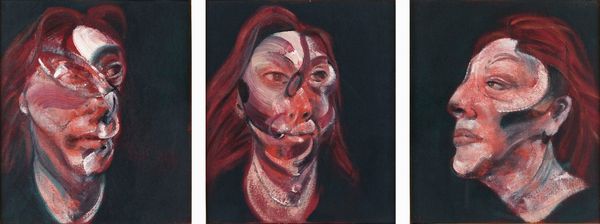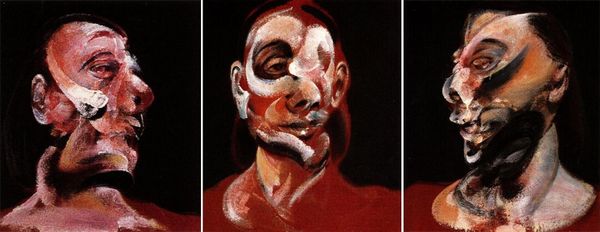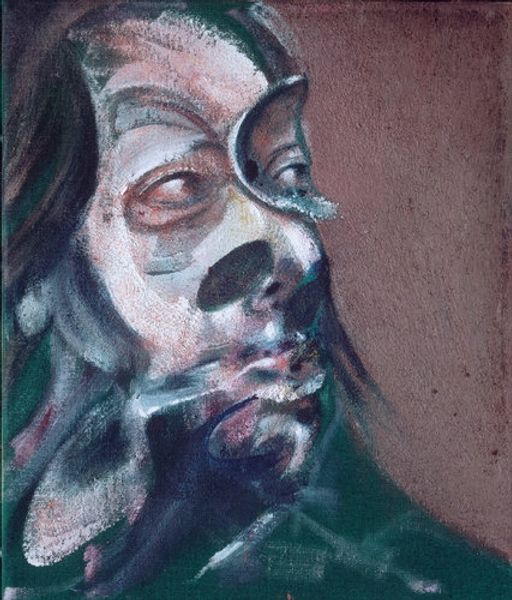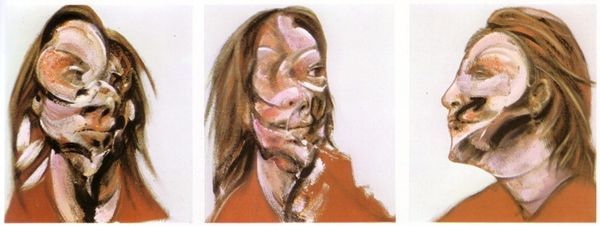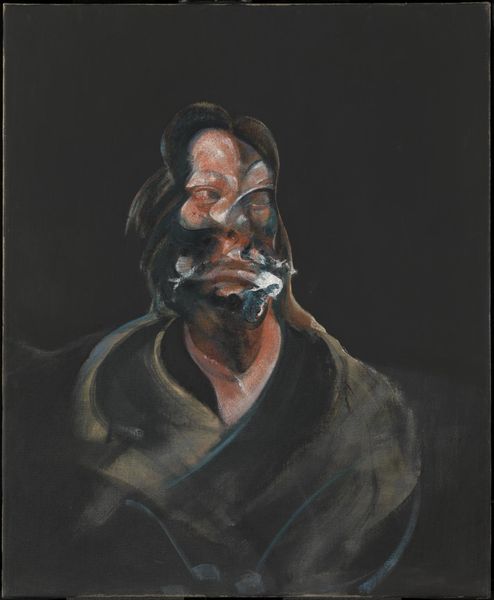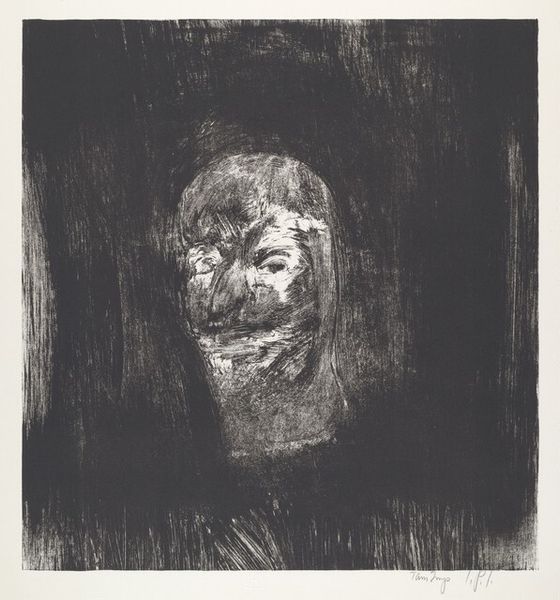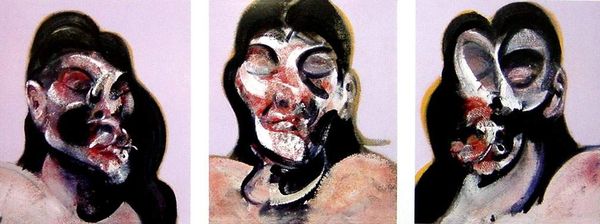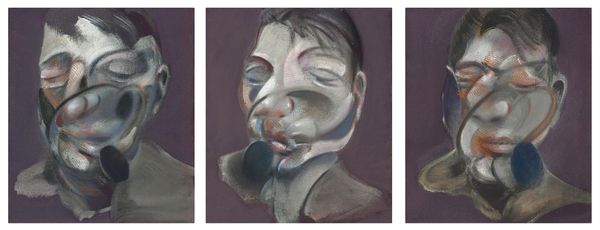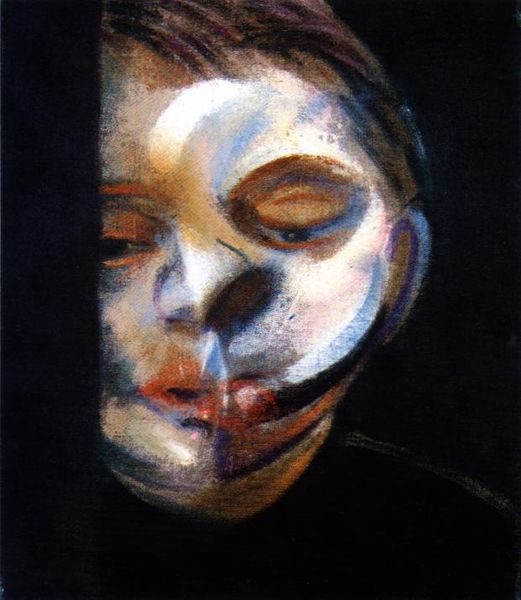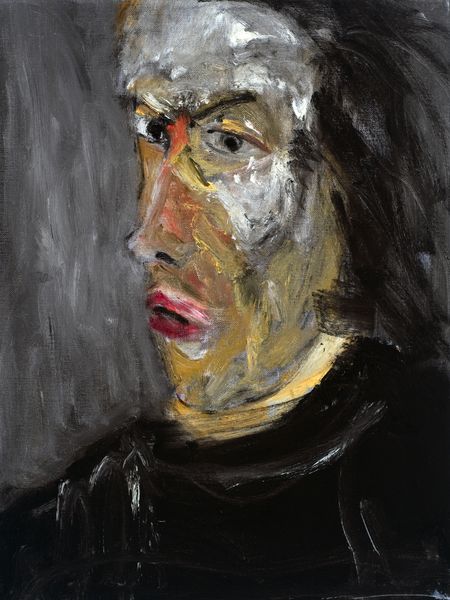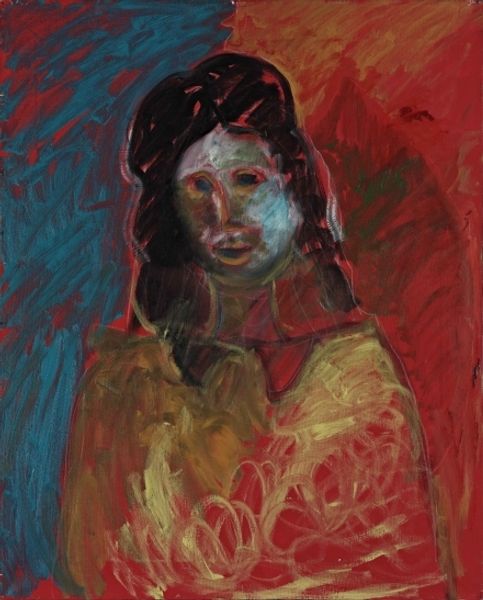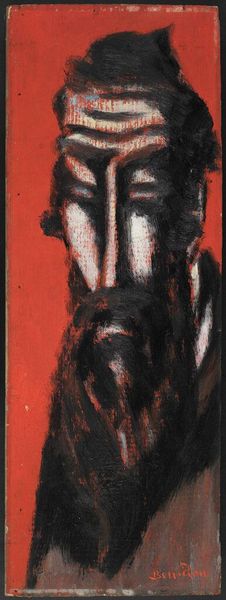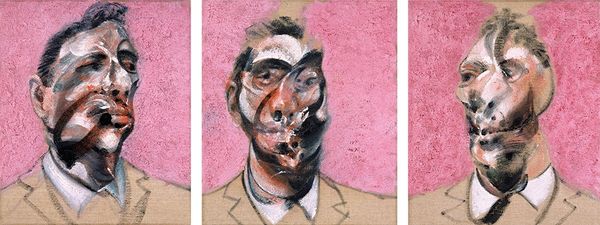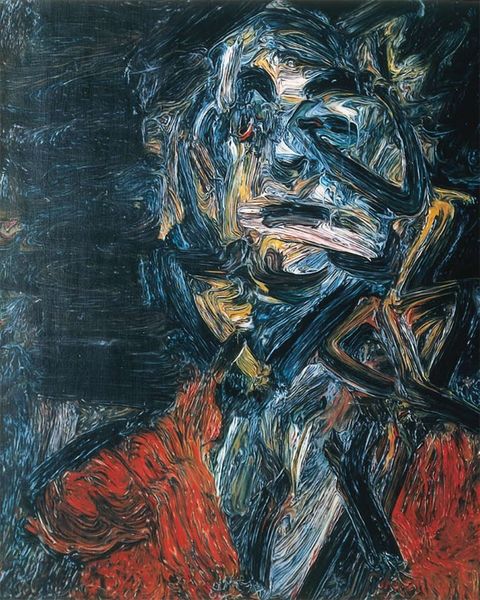
Copyright: Francis Bacon,Fair Use
Francis Bacon painted "Three Studies of Isabel Rawsthorne (on a green background)" sometime in the second half of the 20th century. Bacon, a gay man, lived through the second world war, a period of immense violence and uncertainty which profoundly impacted his work. Here we see the artist's friend Isabel Rawsthorne, an artist and a figure within the post-war art scene. Bacon's triptych presents Rawsthorne not as a static figure, but as a shifting, fragmented series of visceral portraits. Bacon was interested in pushing the boundaries of representation, saying he wanted to "distort the thing far beyond appearance, but in the distortion, bring it back to a recording of appearance". Consider how Bacon captures the emotional intensity of human experience in Rawsthorne's portraits. In his work, Bacon captures the anxieties of the post-war era, and the complexity of human identity. Rawsthorne's image becomes a site where we can explore themes of identity, gender, and representation.
Comments
No comments
Be the first to comment and join the conversation on the ultimate creative platform.
